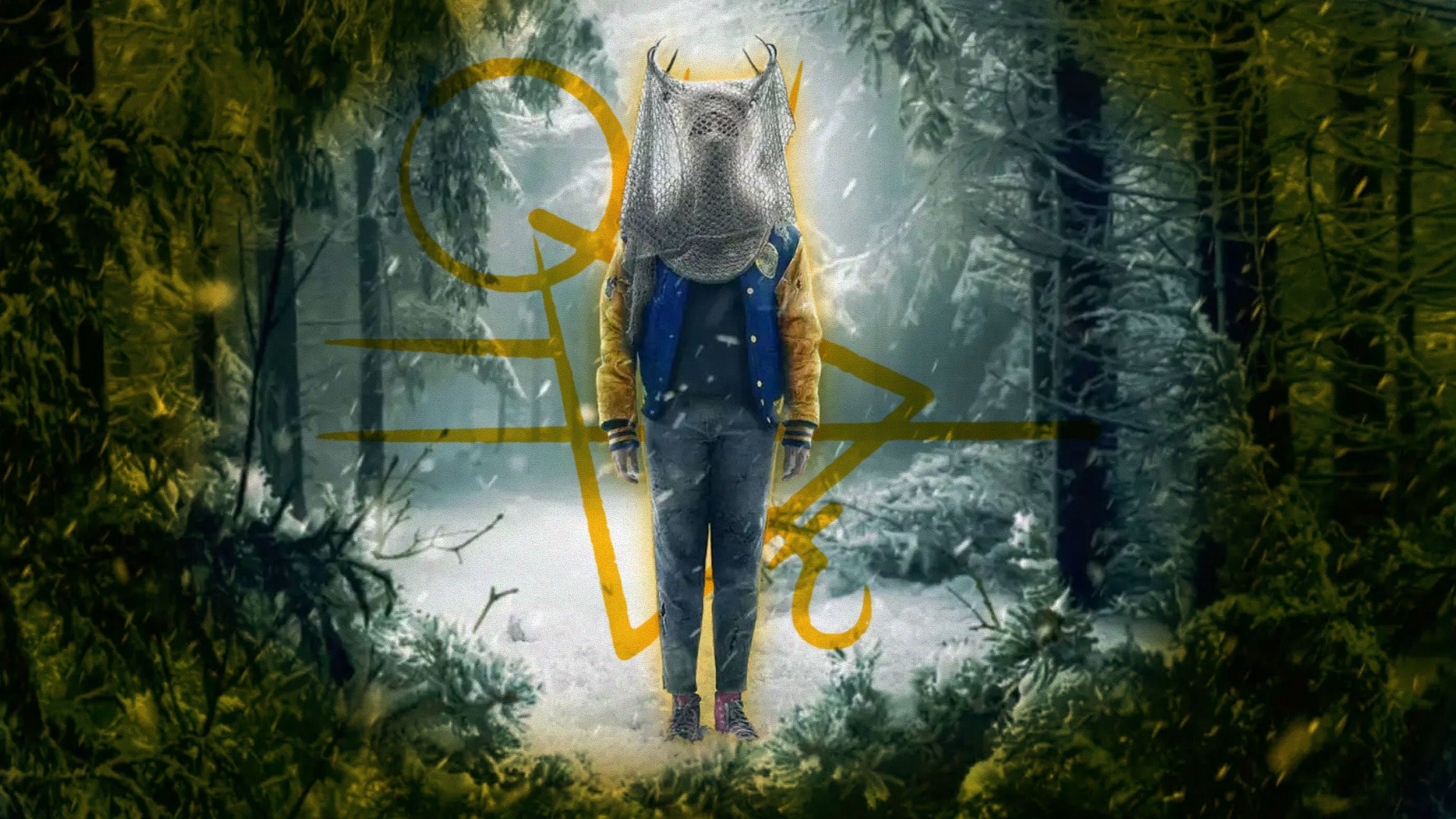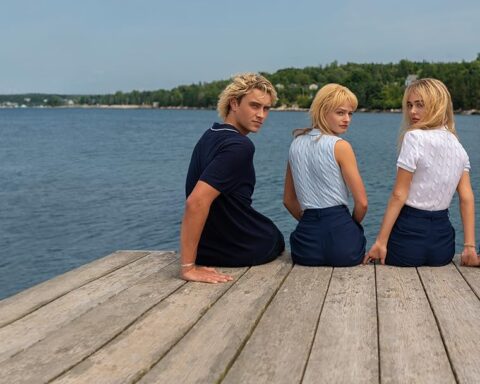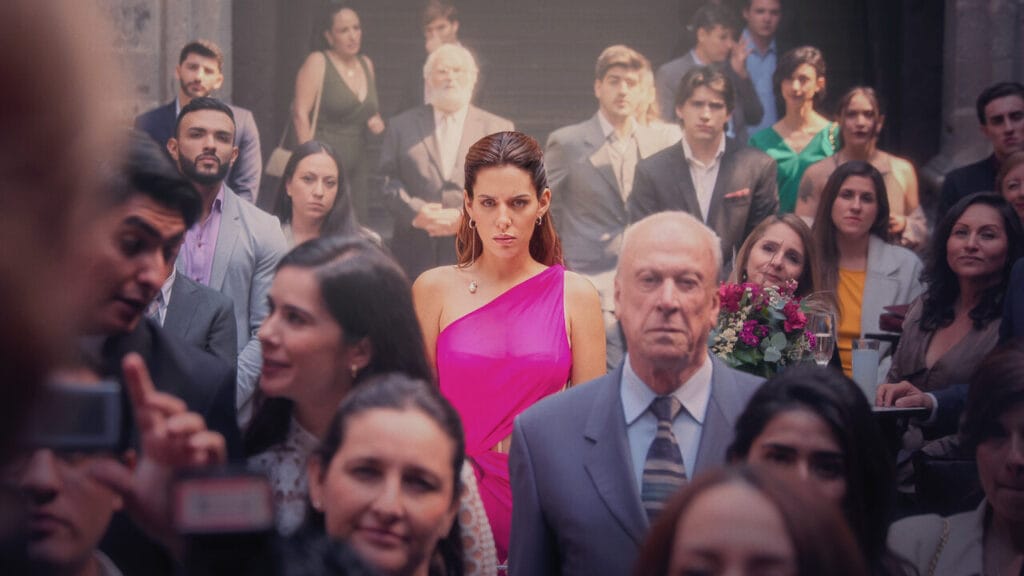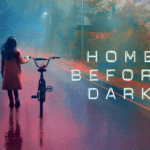“Yellowjackets,” a Showtime series that premiered in November 2021, emerges from the dark woods of television as a blend of psychological thriller, survival drama, and coming-of-age story. Created by Ashley Lyle and Bart Nickerson, the show rapidly garnered critical acclaim and a fervent fanbase, not just for its gripping plot but for its daring exploration of the human condition under duress. With an ensemble cast featuring Melanie Lynskey, Juliette Lewis, Christina Ricci, and Tawny Cypress, alongside a talented group of younger actors portraying their teenage counterparts, “Yellowjackets” straddles the line between horror and drama, past and present, sanity and madness.
At its core, “Yellowjackets” is a dual-timeline narrative. It tells the story of a high school girls’ soccer team in the 1990s whose plane crashes in the remote wilderness, forcing them into a brutal fight for survival. Simultaneously, it chronicles the aftermath of these events in the present day, where the survivors, now middle-aged, grapple with the unresolved trauma and dark secrets of their past. This interplay of timelines is not just a structural choice but a thematic one, illustrating how the past perpetually haunts the present and how trauma can warp the mind and soul.

Narrative Structure and Themes
“Yellowjackets” stands out for its intricate narrative structure, weaving together the past and present in a way that continuously builds tension and intrigue. The dual timelines are more than a mere plot device; they are the heartbeat of the series, reflecting the fragmented nature of memory and trauma. The show deftly navigates the blurred lines between reality and hallucination, sanity and madness, civilization and savagery, leaving viewers questioning what is real and what is imagined.
The wilderness serves as a metaphorical and literal battleground for the girls’ descent into chaos. Stripped of the societal norms that once governed their lives, they revert to primal instincts in a desperate bid for survival. This descent is portrayed with a harrowing sense of inevitability, as the show explores how quickly civilization’s veneer can be peeled away under extreme circumstances. The wilderness becomes a character in itself—unforgiving, mysterious, and darkly seductive.
In the present day, the survivors are haunted by their past in more ways than one. The trauma they endured in the wilderness manifests in various forms—addiction, paranoia, repressed memories, and fractured relationships. Their struggle to maintain a semblance of normalcy while being pulled back into the darkness of their past is a central theme of the show. The present-day narrative is as much a psychological exploration as it is a mystery, with each character’s life unraveling in ways that reflect the unresolved horrors of their youth.

Character Development and Performances
The strength of “Yellowjackets” lies not just in its plot but in its characters—flawed, complex, and deeply human. The show excels in creating characters that feel lived-in, with each one grappling with their own demons. The ensemble cast is uniformly excellent, with standout performances from both the adult and teenage actors.
Melanie Lynskey delivers a powerhouse performance as the adult Shauna, a woman whose seemingly mundane suburban life is a fragile mask for the darkness that lies beneath. Lynskey’s portrayal of Shauna is nuanced and layered, capturing the character’s simmering rage, guilt, and desperation. Her chemistry with Sophie Nélisse, who plays the teenage Shauna, is particularly compelling, with both actors embodying the character’s journey from a shy, self-effacing teenager to a woman on the brink of self-destruction.
Juliette Lewis as the adult Natalie is equally riveting, bringing a raw, unfiltered intensity to the role. Natalie’s struggle with addiction and her refusal to conform to societal expectations make her one of the most compelling characters on the show. Lewis’s performance is a masterclass in portraying a woman who is simultaneously strong and vulnerable, defiant and broken. Her teenage counterpart, played by Sophie Thatcher, captures the wild, rebellious spirit of young Natalie with a magnetic energy that makes her a standout in the ensemble cast.
Christina Ricci’s portrayal of Misty, both as a teenager and an adult, is a chilling study in manipulation and madness. Ricci brings a sinister charm to the role, making Misty both terrifying and oddly endearing. Her ability to shift from sweet and innocent to calculating and ruthless with a mere change in expression is a testament to her skill as an actress. Sammi Hanratty, who plays the teenage Misty, is equally impressive, delivering a performance that is both unsettling and tragic.
Tawny Cypress and Jasmin Savoy Brown round out the main cast as the adult and teenage versions of Taissa, respectively. Taissa’s arc is one of the most complex in the series, as she grapples with her ambition, her identity, and the darkness that seems to follow her. Cypress and Brown bring a quiet intensity to the role, capturing Taissa’s internal conflict and her struggle to keep her life from spiraling out of control.
The show also does an excellent job of developing the secondary characters, each of whom adds depth and richness to the narrative. The relationships between the girls, both in the past and present, are fraught with tension, rivalry, and unspoken truths. The dynamics within the group are constantly shifting, reflecting the power struggles and alliances that form when survival is at stake.
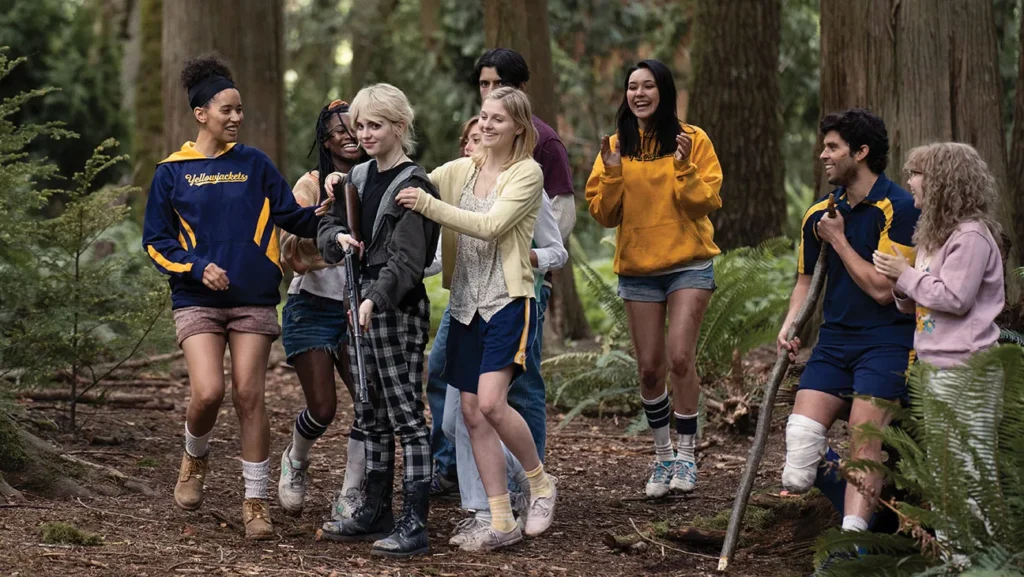
Cinematography and Atmosphere
Visually, “Yellowjackets” is a triumph. The show’s cinematography is a key component of its storytelling, using light, color, and framing to create a sense of unease and foreboding. The wilderness scenes are shot with a stark, almost haunting beauty, capturing the isolation and danger of the environment. The contrast between the lush, vibrant colors of the forest and the bleakness of the girls’ situation adds to the sense of disorientation and dread that permeates the series.
The present-day scenes are equally atmospheric, with a muted color palette and tight, claustrophobic framing that reflect the characters’ inner turmoil. The use of shadows and darkness is particularly effective in conveying the themes of repression and hidden truths. The show’s visual style is reminiscent of classic horror films, with its use of slow zooms, lingering shots, and unsettling close-ups creating a constant sense of tension.
The sound design and score also play a crucial role in building the show’s atmosphere. The eerie, discordant music and the use of diegetic sound—such as the ominous rustling of leaves or the distant howling of wind—heighten the sense of dread. The show’s use of 90s music is also noteworthy, not just as a nostalgic nod to the era but as a means of deepening the emotional resonance of certain scenes. Songs like “Kiss from a Rose” by Seal or “Today” by The Smashing Pumpkins are used to great effect, juxtaposing the innocence of youth with the horror of the situation.
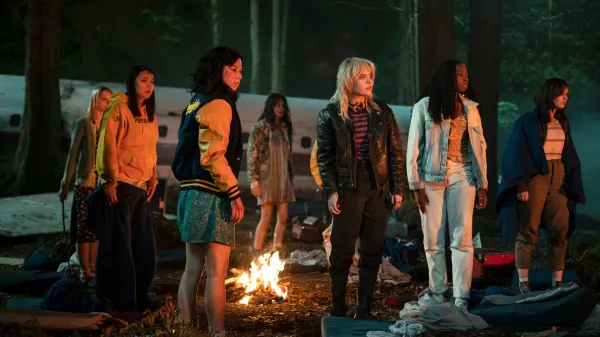
Thematic Depth and Symbolism
Beyond its surface narrative, “Yellowjackets” is a show rich with themes and symbolism, inviting viewers to ponder deeper questions about human nature, society, and the psyche. One of the central themes is the idea of duality—the duality of time, of identity, and of civilization versus savagery. The show constantly plays with the idea that the line between good and evil, sanity and madness, is thin and easily crossed. This duality is mirrored in the show’s structure, with the past and present timelines reflecting and refracting each other.
The wilderness itself is a powerful symbol in the show, representing the unknown, the untamed, and the uncontrollable forces within each character. It is a place where the rules of society no longer apply, and where the characters are forced to confront their primal instincts. The wilderness strips away the masks that the girls wear in their everyday lives, revealing their true selves. It becomes a crucible in which their identities are forged, broken, and remade.
The theme of trauma is also central to the show, explored not just as a psychological condition but as a physical and metaphysical presence. The past is not just a memory for the survivors; it is a living, breathing entity that haunts them, shapes them, and threatens to consume them. The trauma they endured in the wilderness is portrayed as a wound that never fully heals, festering beneath the surface and erupting in destructive ways. The show’s portrayal of trauma is nuanced and unflinching, refusing to offer easy answers or resolutions.
Another significant theme is the idea of survival—what it means, what it costs, and what it reveals about the human soul. The girls’ struggle to survive in the wilderness is paralleled by their struggle to survive in the present day, in a society that demands they bury their past and conform to its norms. The show asks difficult questions about the nature of survival: Is it enough to simply stay alive, or is there a moral and psychological cost to survival that cannot be ignored? What does it mean to survive when the person you were no longer exists?
“Yellowjackets” also delves into the idea of power—how it is gained, wielded, and lost. The power dynamics within the group shift constantly, reflecting the tenuous and volatile nature of their situation. The show explores how power can corrupt, how it can be used to control and manipulate, and how it can be both a means of survival and a path to destruction. The characters’ relationships with power—both in the wilderness and in their adult lives—are complex and often contradictory, highlighting the ambiguity and danger of power in all its forms.
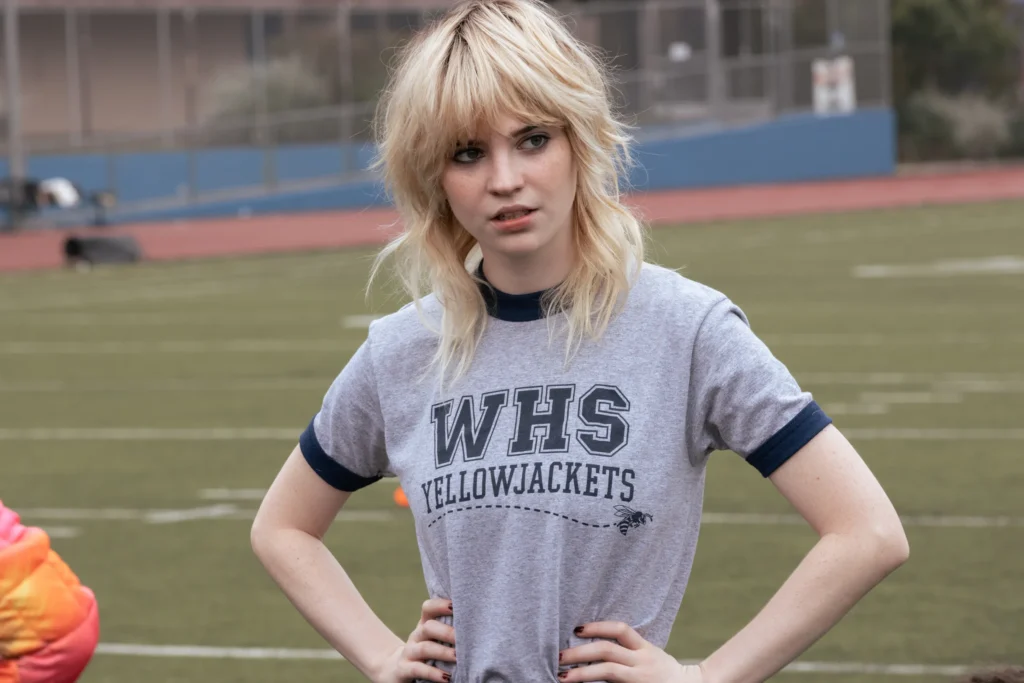
Feminism and Gender Politics
“Yellowjackets” is a show that is unapologetically feminist, not in a didactic way, but in its very DNA. It is a story about women, created by women, and it offers a raw, unfiltered portrayal of female rage, desire, and complexity. The show challenges traditional gender roles and expectations, particularly in its depiction of the teenage girls in the wilderness. These girls are not the typical victims or damsels in distress; they are survivors, warriors, and sometimes, monsters.
The show subverts the typical “Final Girl” trope often seen in horror, where one virtuous female survivor emerges victorious over evil. Instead, “Yellowjackets” presents a group of girls who are all, in their own ways, both victims and perpetrators. The show refuses to simplify or sanitize the girls’ experiences, instead presenting their descent into savagery as a complex and multifaceted process. It explores the idea that women, too, are capable of violence, cruelty, and moral ambiguity.
The adult characters are similarly complex, each grappling with the expectations placed upon them by society and the realities of their own desires and fears. The show’s portrayal of middle-aged women is particularly noteworthy, as it delves into issues of aging, motherhood, and identity in ways that are rarely seen on television. The characters’ struggles with their past are intertwined with their struggles to define themselves in a world that often seeks to define them by their traumas or their roles as mothers, wives, and professionals.
The show also touches on issues of sexual politics, particularly in its depiction of the girls’ relationships with each other and with the few male characters in the series. The power dynamics within the group are often influenced by the girls’ burgeoning sexual identities and desires, as well as by the external pressures of societal norms. The show does not shy away from exploring the darker aspects of female sexuality, including the ways in which it can be used as a tool for manipulation and control.
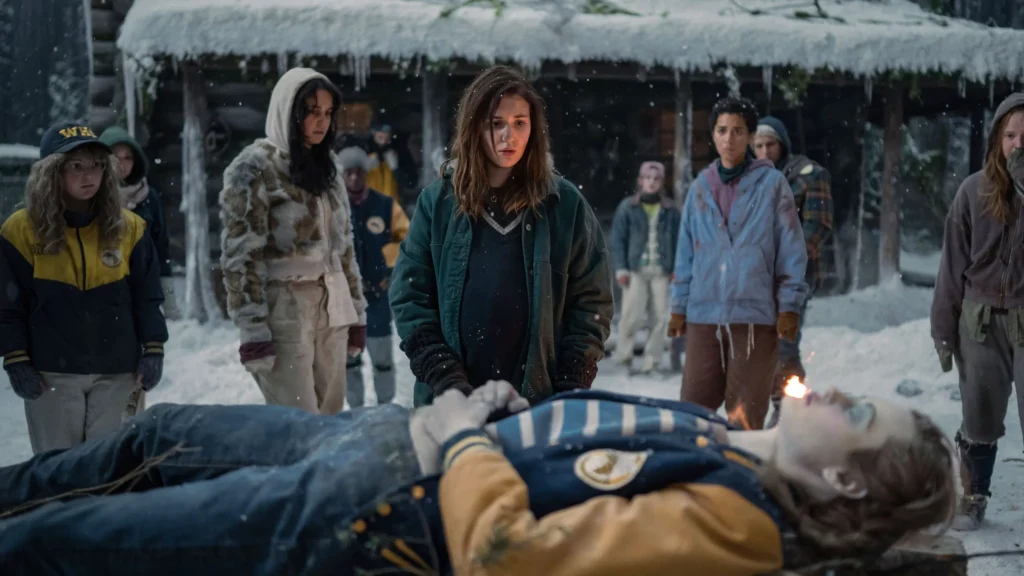
Mystery and Speculation
One of the most compelling aspects of “Yellowjackets” is its mystery. From the very first episode, the show hooks viewers with tantalizing questions: What really happened in the wilderness? How did the girls survive, and at what cost? Who—or what—was responsible for the dark events that transpired? The show doles out answers sparingly, keeping viewers in a constant state of suspense.
The mystery is not just a narrative hook but a thematic one as well. The show plays with the idea of the unknown and the unknowable, both in the literal sense of what happened in the wilderness and in the psychological sense of what lies hidden within each character. The show’s refusal to provide clear answers or easy resolutions mirrors the way trauma and memory work in real life—fragmented, elusive, and often impossible to fully understand.
The show’s use of symbolism and foreshadowing adds to the sense of mystery, with numerous hints and clues scattered throughout the episodes. The symbol of the mysterious figure with antlers, the strange rituals that the girls engage in, and the enigmatic behavior of certain characters all point to a deeper, more sinister force at play. Whether this force is supernatural or psychological—or both—is one of the show’s central mysteries, and it is this ambiguity that makes “Yellowjackets” so compelling.
The speculation and theories that have sprung up around the show are a testament to its complexity and depth. Fans have dissected every frame, looking for hidden meanings and connections, and the show encourages this kind of engagement. It is a show that rewards close viewing and rewatching, with each new piece of information casting previous events in a different light. Theories range from the plausible to the outlandish, but all are rooted in the show’s rich tapestry of themes and symbols.
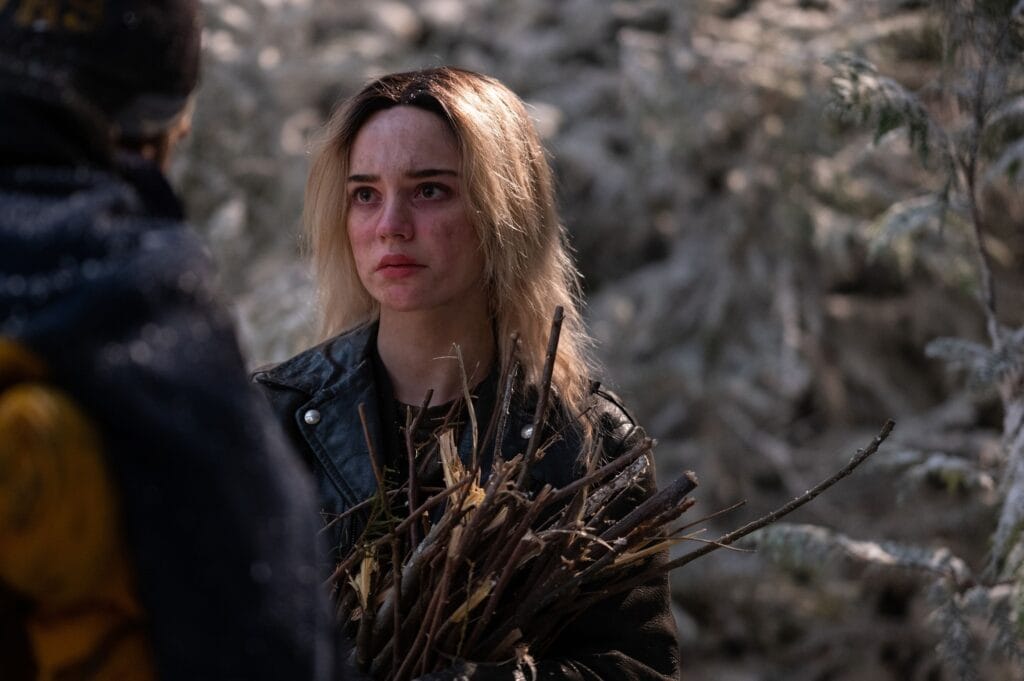
Criticisms and Controversies
While “Yellowjackets” has been widely praised, it is not without its criticisms. Some viewers have found the show’s pacing to be uneven, particularly in the present-day storyline. The slow burn of the mystery and the gradual unraveling of the characters’ lives can feel frustrating at times, especially for those expecting more immediate answers or action. The show’s tendency to withhold information and keep viewers in the dark can also be a double-edged sword, creating a sense of intrigue but also risking alienation.
Another criticism has been the show’s depiction of violence, particularly in the scenes set in the wilderness. The brutality of the girls’ actions and the graphic nature of some scenes have sparked debate about whether the show crosses the line into gratuitousness. While the violence is certainly a key part of the show’s exploration of human nature under extreme circumstances, some viewers have questioned whether it is always necessary or if it sometimes veers into exploitation.
The show’s portrayal of mental illness has also been a point of contention. While “Yellowjackets” offers a nuanced depiction of trauma and its effects, some have argued that it leans too heavily on the trope of the “crazy” woman, particularly in its portrayal of Misty and Taissa. The show’s depiction of these characters as unstable and potentially dangerous has raised questions about the representation of mental illness in media and whether it reinforces harmful stereotypes.
Finally, there is the issue of the show’s unresolved mysteries. While the ambiguity and open-ended nature of the story are part of its appeal, there is a risk that the show may not be able to provide satisfying answers to the many questions it has raised. The show’s second season will need to balance the need for resolution with the desire to maintain the mystery and tension that have made it so compelling. If the show fails to deliver on its promises, it could face a backlash from fans who have invested deeply in its intricate web of secrets.

Conclusion
In conclusion, “Yellowjackets” is a daring and provocative piece of television that pushes the boundaries of genre and storytelling. It is a show that is as much about the human psyche as it is about survival, offering a raw and unflinching exploration of trauma, identity, and power. The show’s complex characters, atmospheric cinematography, and rich thematic depth make it a standout in a crowded television landscape. While it is not without its flaws, “Yellowjackets” succeeds in creating a world that is as compelling as it is terrifying, leaving viewers eager for more.
At its best, “Yellowjackets” is a masterful blend of horror and drama, a show that delves into the darkest corners of the human soul and emerges with something profound and unsettling. It is a show that lingers in the mind long after the credits roll, its images and themes haunting and resonant. As we await the next chapter in this harrowing tale, one thing is certain: “Yellowjackets” has left an indelible mark on the landscape of television, and its story is far from over.
